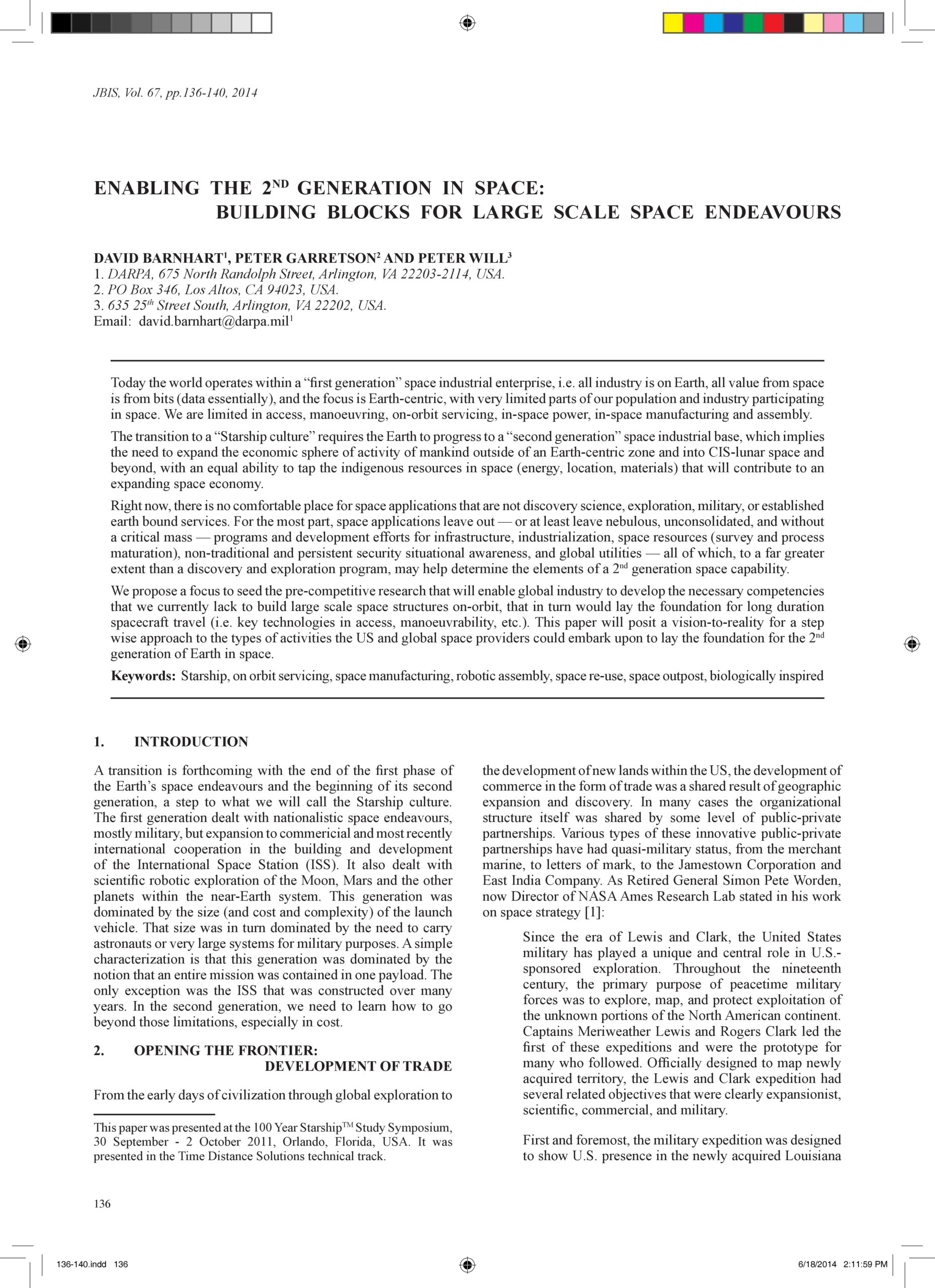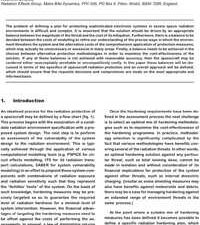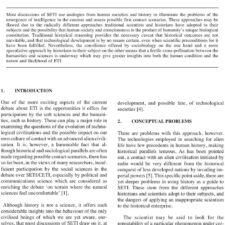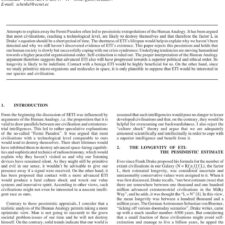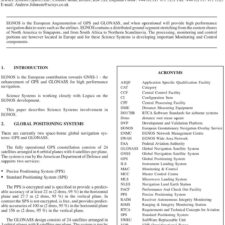Enabling the 2nd Generation in Space: Building Blocks for Large Scale Space Endeavours
£5.00
D. Barnhardt et al. (2014), JBIS, 67, pp.136-140
Refcode: 2014.67.136
Keywords: Starship, On orbit servicing, Space manufacturing, Robotic assembly, Space re-use, Space outpost, Biologically inspired
Abstract:
Today the world operates within a “first generation” space industrial enterprise, i.e. all industry is on Earth, all value from space is from bits (data essentially), and the focus is Earth-centric, with very limited parts of our population and industry participating in space. We are limited in access, manoeuvring, on-orbit servicing, in-space power, in-space manufacturing and assembly. The transition to a “Starship culture” requires the Earth to progress to a “second generation” space industrial base, which implies the need to expand the economic sphere of activity of mankind outside of an Earth-centric zone and into CIS-lunar space and beyond, with an equal ability to tap the indigenous resources in space (energy, location, materials) that will contribute to an expanding space economy. Right now, there is no comfortable place for space applications that are not discovery science, exploration, military, or established earth bound services. For the most part, space applications leave out — or at least leave nebulous, unconsolidated, and without a critical mass — programs and development efforts for infrastructure, industrialization, space resources (survey and process maturation), non-traditional and persistent security situational awareness, and global utilities — all of which, to a far greater extent than a discovery and exploration program, may help determine the elements of a 2nd generation space capability. We propose a focus to seed the pre-competitive research that will enable global industry to develop the necessary competencies that we currently lack to build large scale space structures on-orbit, that in turn would lay the foundation for long duration spacecraft travel (i.e. key technologies in access, manoeuvrability, etc.). This paper will posit a vision-to-reality for a step wise approach to the types of activities the US and global space providers could embark upon to lay the foundation for the 2nd generation of Earth in space.

